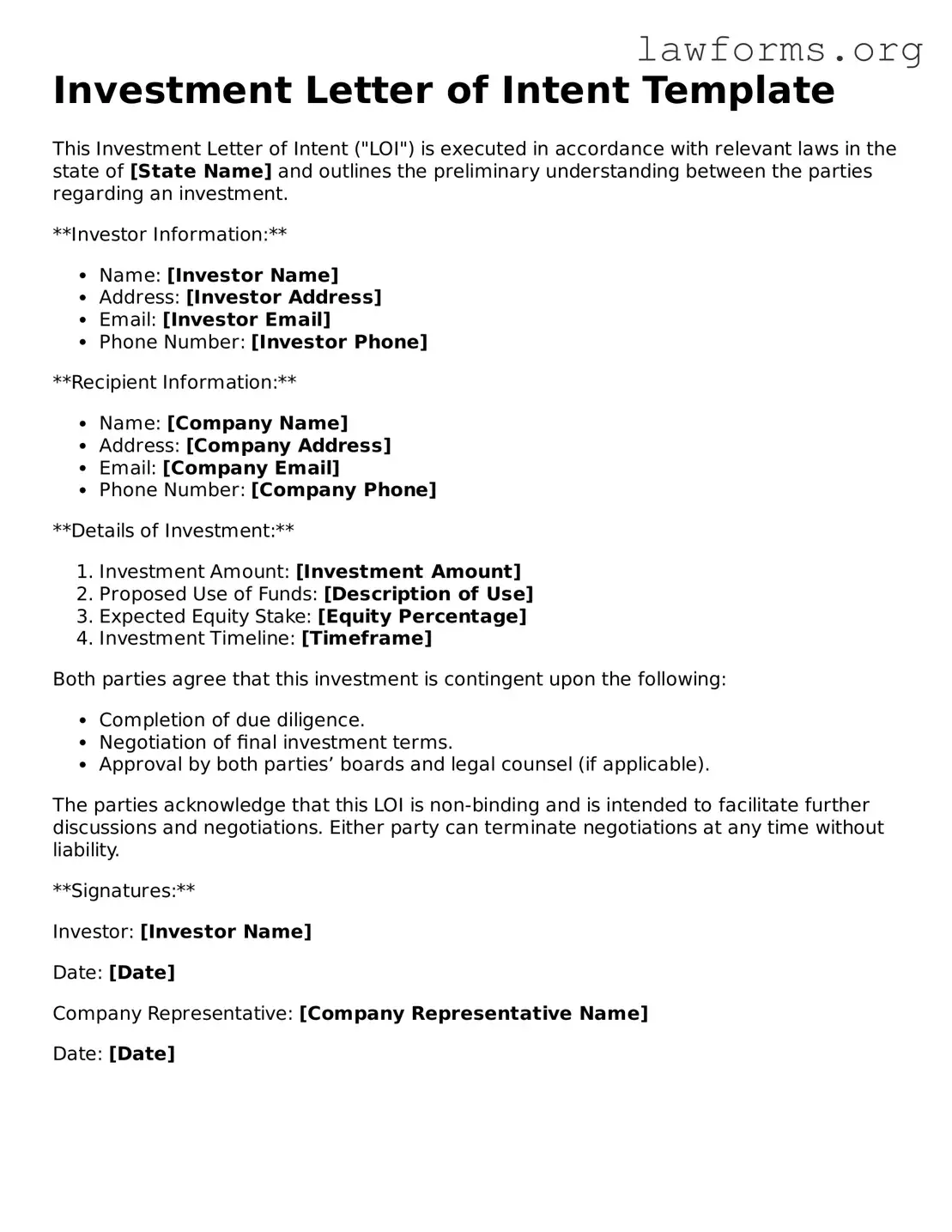Investment Letter of Intent Template
This Investment Letter of Intent ("LOI") is executed in accordance with relevant laws in the state of [State Name] and outlines the preliminary understanding between the parties regarding an investment.
**Investor Information:**
- Name: [Investor Name]
- Address: [Investor Address]
- Email: [Investor Email]
- Phone Number: [Investor Phone]
**Recipient Information:**
- Name: [Company Name]
- Address: [Company Address]
- Email: [Company Email]
- Phone Number: [Company Phone]
**Details of Investment:**
- Investment Amount: [Investment Amount]
- Proposed Use of Funds: [Description of Use]
- Expected Equity Stake: [Equity Percentage]
- Investment Timeline: [Timeframe]
Both parties agree that this investment is contingent upon the following:
- Completion of due diligence.
- Negotiation of final investment terms.
- Approval by both parties’ boards and legal counsel (if applicable).
The parties acknowledge that this LOI is non-binding and is intended to facilitate further discussions and negotiations. Either party can terminate negotiations at any time without liability.
**Signatures:**
Investor: [Investor Name]
Date: [Date]
Company Representative: [Company Representative Name]
Date: [Date]
